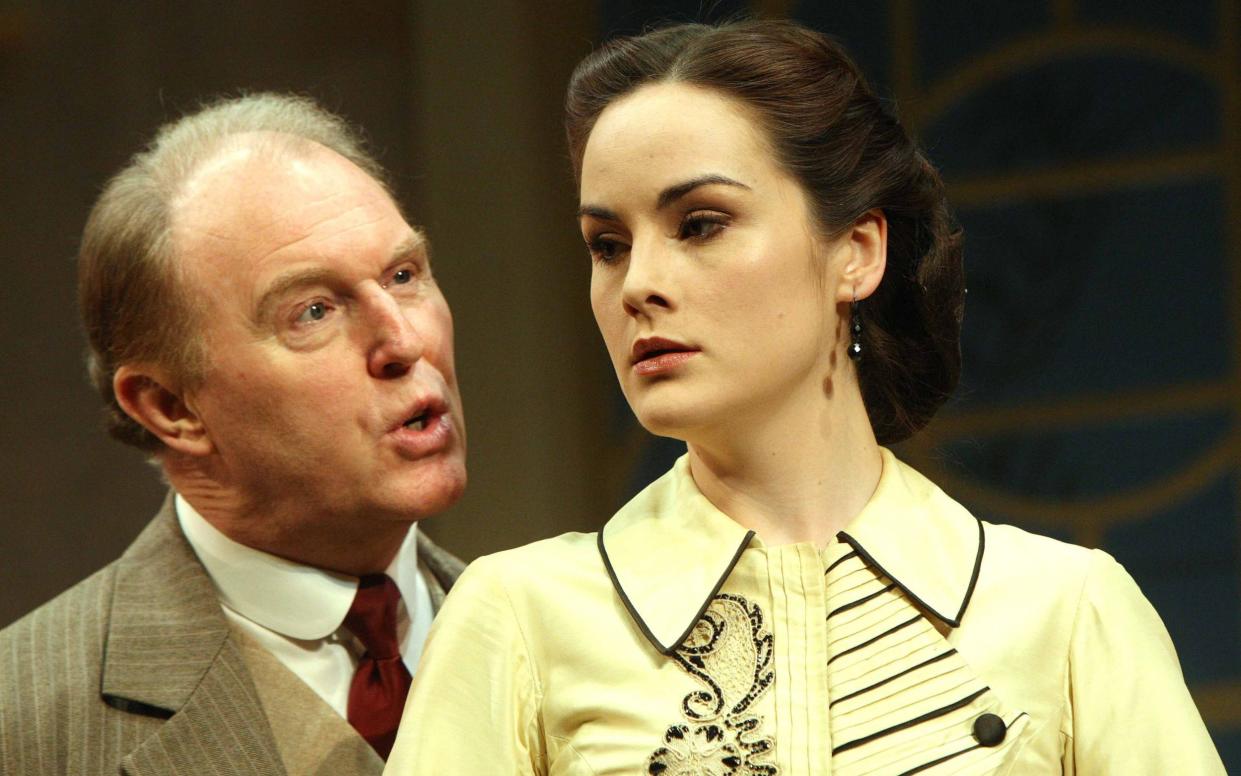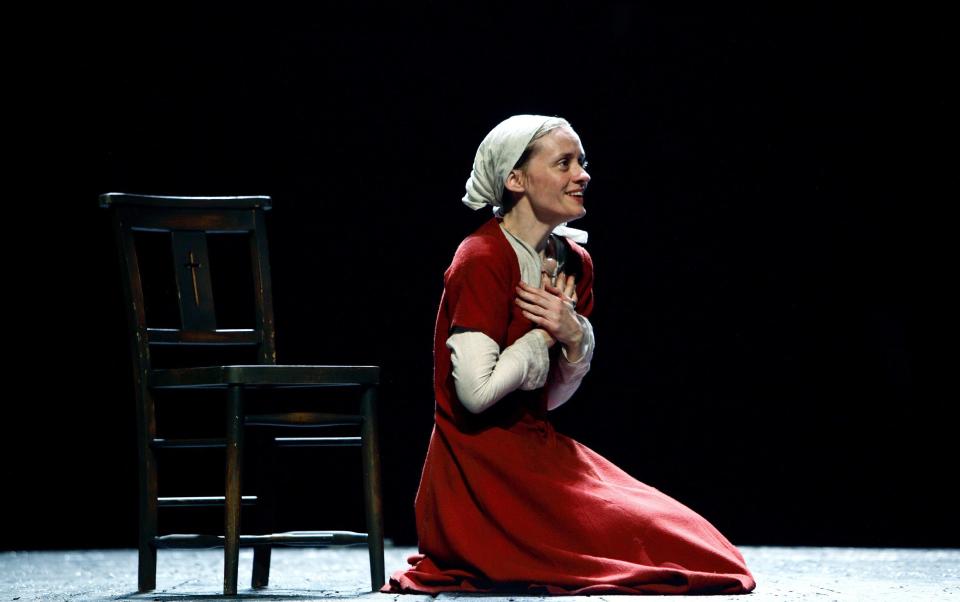George Bernard Shaw seemed to scorn women – but he gave them all the best lines

“Women have been a ghastly nuisance,” George Bernard Shaw once told a friend. “[They] have never played an important part in my life … I could always disregard them more easily than friends.”
It’s a sentiment straight out of the mouth of his most famous male creation, the insufferable phonetician Henry Higgins who in Shaw’s 1914 play Pygmalion informs his friend Colonel Pickering that “the minute I let a woman make friends with me, she becomes jealous, exacting, suspicious and a damned nuisance”. Certainly George Bernard Shaw had very few female friends, preferring instead to develop chaste but intense romantic obsessions with his leading ladies, including Mrs Patrick Campbell who first played Eliza in 1914.
Of course, Eliza, the Cockney flower girl whom Higgins transforms as part of a social experiment into a duchess by teaching her to enunciate her vowels, has the upper hand. Following in the footsteps of Ibsen’s Nora, in the play’s final moments she walks out, after telling Henry where to stick his request that she order him a ham and a Stilton cheese and buy him some gloves. Yet at the same time the play reflects something of Shaw’s private ambivalence towards the opposite sex. One could argue that Higgins, in his conflicted desire for Eliza, represents an alter ego of sorts for Shaw, whose deep distaste for sex, and his profound discomfort in regarding women as sexual beings, stood in sharp contrast with his public politics. Like Higgins, he sometimes seemed unable to regard them as women at all, even in the moment of their greatest triumph. “Five minutes ago you were like a millstone round my neck,” Higgins tells Eliza after she asserts her independence. “Now you’re a tower of strength: a consort battleship. You and I and Pickering will be three old bachelors together instead of only two men and a silly girl.”
Pygmalion is revived this week at the Old Vic with Bertie Carvel and Patsy Ferran, 15 years after Peter Hall directed it on the same stage in 2008. Like many of his plays, it critiques the institution of marriage, of which Shaw famously had dim views, regarding it as a form of economic and sexual bondage that yoked a man and a woman unhappily together for life and, more specifically, kept women chained to the kitchen and the nursery. That Pygmalion is much better known in the form of the fabulously romantic Audrey Hepburn movie My Fair Lady, based on the 1956 Lerner and Loewe Broadway musical, is one of the great ironies of theatre: both musical and film changed Shaw’s ending by having the avowedly single-minded Doolittle return to Higgins, as did the 1938 British film Pygmalion.
Shaw had been fighting for his play not to be considered a romance ever since its 1914 premiere, during which Herbert Beerbohm Tree’s Higgins would throw flowers at Eliza’s departing person, and in later performances insisted she return to ask him what size he took his gloves, much to the delighted pleasure of the audience. “My ending makes money,” he told an appalled Shaw. “You ought to be grateful.”

Nowadays, My Fair Lady makes Eliza’s return as ambiguous as Shaw made her departure. All the same, it’s taken western culture many, many decades to catch up with Shaw who, in his abhorrence of the idea there should be any sort of relationship between “a middle-aged bully and an 18-year-old girl” in Pygmalion, anticipates the MeToo movement by nearly 100 years.
The fact is Shaw remains perhaps the greatest playwright from these isles when it comes to parts for women: he named plays after women and used them to covertly drive the action even while it appears the men are in charge and, in plays such as Saint Joan and Major Barbara, to carry the play’s ideological arguments. In radical contrast with the Edwardian theatre that perpetuated conservative Victorian ideas of femininity, Shaw’s women are New Women who embody the most radical tenets of the time: economic and sexual equality, education for all, women’s suffrage, intellectual and social emancipation. “I am brave: I am unbought,” declares Lina in Shaw’s 1909 marital satire Misalliance. It’s a cry that echoes through nearly all of Shaw’s greatest plays.
“Shaw’s female characters run rings round the men,” says Sian Phillips, recently appointed a Trustee of the Shaw Society, alongside Judi Dench and Patricia Hodge. A devoted Shavian, her many roles include Saint Joan in 1958, Ann Whitefield in Man and Superman in 1966 and, at the National in 1982, the magnificent matriarchal snob Lady Britomart whose opening speech in Major Barbara contains several dazzlingly entertaining barbs against the domestic and emotional failings of her estranged husband. “You can see it in his marriage [to the political activist and independently wealthy fellow Fabian Society member Charlotte Payne-Townshend whom Bernard Shaw married in 1898]: she kept him constantly on the move. He did everything she told him to.” The marriage, by all accounts happy, was never consummated, although not only because of Shaw’s views on sex but allegedly because Payne-Townshend didn’t want children.

Certainly, Shaw’s female characters – free thinkers who know their own mind and desires – often expose the weakness of men. In 1898’s Candida, the eponymous heroine, caught between her husband and the poet who loves her, chooses her husband because he is the weaker and therefore, she argues, needs her more. In 1923’s Saint Joan, Shaw’s eponymous military visionary, based on the much mythologised 15th-century French religious warrior, repeatedly exposes and humiliates the French patriarchal establishment. In 1903’s Man and Superman, a riff on Don Juan, the young Ann Whitefield repeatedly challenges her guardian John Tanner’s revolutionary ideas and eventually persuades
him to marry her.
Yet Man and Superman’s Whitefield – most recently played by Indira Varma in Simon Godwin’s 2015 revival at the National Theatre – also embodies the many contradictions in the Shavian world view when it comes to women. He believed women’s biological need for children, or what he called “the Life Force”, meant they sought out men in order to force them to marry them. Certainly Whitefield can be regarded as an archetypal sexual predator – she is described in the play as a “boa constrictor” and a “Lady Mephistopheles” – and it is arguable Tanner, Higgins and Shaw all share the same terror of the ardent woman intent on capturing her prey.
Godwin however defends Whitefield, arguing that the play “is a critique” of [Tanner’s] position. “Yes, Shaw gives Tanner the lion’s share of the lines and some alarming descriptions of the male terror of entrapment and the captivity of marriage. Yet Ann’s Beatrice-like wit and brilliance – especially in the hands of Indira Varma – meant her triumph was total.”

The key to Shaw and his attitudes towards women can, I think, be found in something he said about his own wife. “She had none of the feminine traits I had expected,” he said. “And all the human qualities I had only hoped for.” In other words, he didn’t like women for their womanliness; rather he believed they should be given exactly the same rights as men. “It’s not as though he was saying women are wonderful,” says Phillips. “He believed they had a long way to go. He’d say that women had to unlearn the false manners [of their gender] before they could achieve their freedom. He was constantly chipping away.”
His plays are not in thrall to women, instead he imbues them with the same qualities society has traditionally imbued their masculine counterparts. It’s not a perfect form of feminism – it smacks of paternalism, for one thing – but it is why Shaw’s female characters feel so real and so alive in their own skin. As he himself once put it about his many dazzling, immortal female creations, “I always assumed a woman was like myself, and that is how it’s done.” Or as Eliza herself says in Pygmalion: “I’ve a right to be here. Same as you.”
Pygmalion previews from today; oldvictheatre.com